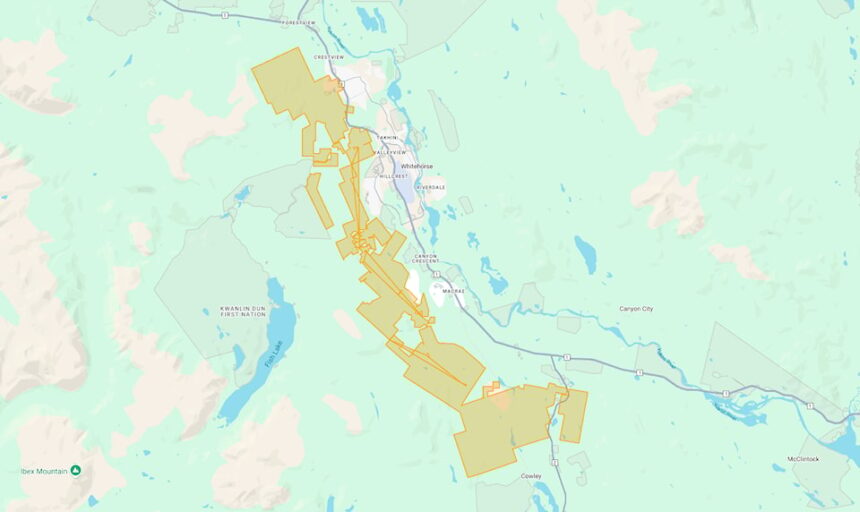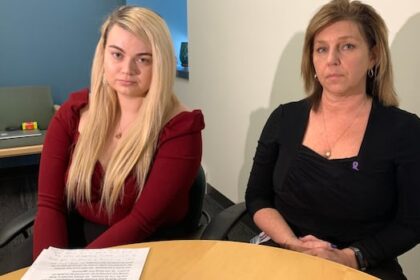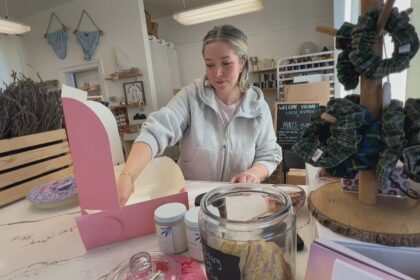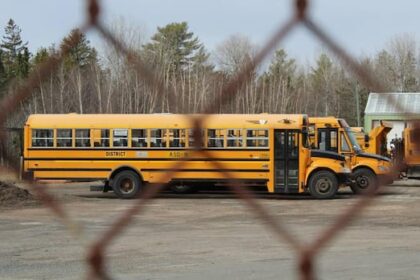An exploration project to assess copper deposits is currently under adequacy review by the Yukon Environmental and Socio-economic Assessment Board Gladiator Metals has proposed a five-year exploration project within Whitehorse’s municipal boundaries to be considered by the Yukon Environmental and Socio-Economic Assessment Board (YESAB). The company says deposits in the area have the potential to transform the city into a world-class source of high-grade copper valued between $7 billion and $10 billion per annum. Gladiator Metals has invested approximately $12 million into the project so far, with 80 per cent of that expenditure going to Whitehorse businesses, according to an email sent to the News by the company’s president, Marcus Harden. He added an additional $15 million is budgeted for spending before January 2026, with hopes to maintain similar levels over the next five years, depending on exploration success and market reactions. The B.C.-based mineral exploration company has submitted a proposal to YESAB to carry out a class of exploration activities that could potentially negatively impact the environment. Gladiator Metals is proposing to conduct five years of exploration work to find and assess copper-molybdenum mineralization on brownfield sites from Crestview to Cowley Creek. “I feel it’s wildly inappropriate to allow exploration and or mining this close to residences period. They would like to put a mine right through the most populated area in the Yukon,” said Cowley Creek resident Glenys Baltimore. Baltimore spoke to the News on March 27 and raised concerns about potential water contamination, groundwater disruption, noise, interference with local trails, possible devaluation of home prices, risk of environmental damage and outdated mining regulations allowing such proximity to homes. “There’s a noise issue and they’re interfering with trails that we maintain back there for mostly skiing and cycling, but people take motorized vehicles back there as well and just the degradation of the land in general. I’m really concerned about water, because a lot of people have wells here,” Baltimore said. Gladiator Metals CEO Jason Bontempo highlighted the significant economic potential of high-grade copper at exploration sites the company is working on in an interview with the News on March 28. He stated that an estimated 14 million tons of ore, potentially graded at over 1 per cent copper, could position Whitehorse as a world-class source of high-grade copper. “At surface, not built underground, but at surface, greater than 14 million tons of ore are grading at 1 per cent or higher per ton of rock. There are only four in the world, only four, and one of them is in Afghanistan, one of them is in the Republic of Congo and one is in Alaska. So, this would be really, really special,” Bontempo said. “It fits anywhere, at that stage, from seven to ten billion dollars per annum. It’s significant, very sticking for a very, very, very small area.” Gladiator Metals employs five full-time employees in Whitehorse, out of a total staff of ten, Harden said. The company’s operations also support jobs at several Whitehorse-based companies, including laboratories that employ between 12 and 25 people, he added. In its proposal to YESAB, Gladiator Metals committed to sourcing supplies and services from local businesses throughout the project’s lifecycle. The company highlighted potential business-to-business relationships with firms such as Kluane Drilling, EcoFor, TetraTech and Core Box Yukon, which are expected to benefit from the project. The exploration project spans eight parcels of Kwanlin Dün First Nation settlement land and four parcels of Ta’an Kwäch’än Council settlement land, according to the proposal. Gladiator Metals stated that the project could create opportunities for Indigenous businesses and joint ventures at various phases of its lifecycle. Residents in Cowley Creek and Mary Lake have raised concerns about prior exploration activities occurring approximately 800 metres from properties within earshot of residences, Glenys Baltimore said. The Cowley Creek resident noted that the Yukon Territorial Court imposed a $43,000 fine on Gladiator Metals in 2023 following exploration work that took place outside the permitted classification of work. “Cowley Creek is the last subdivision before you leave the city. Our subdivision sits right on the city border and the concentration of Gladiator Metals’ exploration is in a place called Cowley Park, which is right across the border from us. So some residents of Cowley Creek and Mary Lake are within 800 metres or less of exploration activity,” Baltimore said. To mitigate disruptions, Gladiator Metals informed YESAB that it plans to communicate the dates of planned activities through community meetings. The proposal noted that these meetings could lead to adapting work schedules to minimize disruptions. The proposal identified environmental impacts, including risks of wastewater runoff from drill sites, potential erosion and reduced groundwater storage capacity. Gladiator Metals outlined measures to mitigate these risks, such as using centrifuges to recirculate fluids in sump pumps, establishing contingency plans with real-time monitoring and implementing erosion control devices. Baltimore, a Cowley Creek resident since 1995, raised concerns about Gladiator Metals not applying for a water permit, citing the company’s frequent operations near water systems in the Cowley Creek Crossing area. The proposed exploration activities involve diamond drilling to test and expand known mineralized zones, as well as geophysical surveys to identify drill sites. Baseline environmental data collection will also take place, the proposal reads. The proposal also outlines measures to mitigate potential impacts on environmental water systems. These measures include low-speed truck crossings with portable mats, regular inspections and maintenance of erosion control devices and adjusting work schedules to avoid heavy rainfall. Gladiator Metals submitted its proposal to YESAB on Feb. 17 as part of the territory’s legislative process to ensure land-use projects meet environmental and socio-economic standards. According to YESAB’s website, the submission process involves several stages, including pre-submission talks, adequacy evaluation, screening and public comment periods.Contact Jake Howarth at jake.howarth@yukon-news.com
Sunday, 21 Dec 2025
Canada – The Illusion
Search
Have an existing account?
Sign In
© 2022 Foxiz News Network. Ruby Design Company. All Rights Reserved.
You May also Like
- More News:
- history
- Standing Bear Network
- John Gonzalez
- ᐊᔭᐦᑊ ayahp — It happened
- Creation
- Beneath the Water
- Olympic gold medal
- Jim Thorpe
- type O blood
- the bringer of life
- Raven
- Wás’agi
- NoiseCat
- 'Sugarcane'
- The rivers still sing
- ᑲᓂᐸᐏᐟ ᒪᐢᑿ
- ᐅᑳᐤ okâw — We remember
- ᐊᓂᓈᐯᐃᐧᐣ aninâpêwin — Truth
- This is what it means to be human.
- Nokoma











